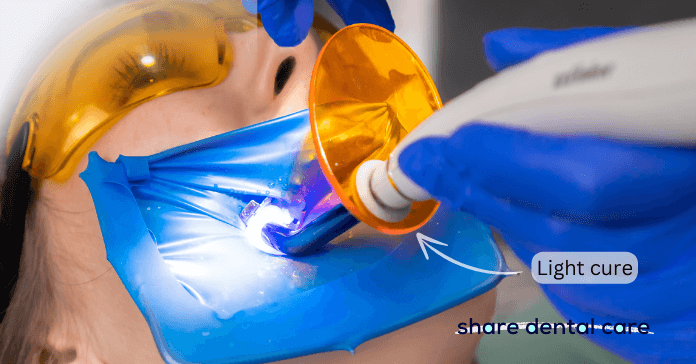Most of us have been there – sitting in the dentist’s chair, staring up at the bright lights, dreading the moment when the dentist tells us we need a cavity filling. The thought of having a drill and fillings in your teeth can be downright scary, and the fear of pain can be even worse. But let’s take a closer look at whether cavity fillings hurt and what you can do to make your experience as comfortable as possible.
Do Cavity Fillings Hurt?
No, cavity fillings typically do not hurt. With modern technology and anesthesia, getting a cavity filling is not painful. Most patients report feeling no pain or discomfort during the procedure.
However, it’s important to note that each individual may have a different pain tolerance and experience varying levels of discomfort. This can also depend on the size and location of the cavity.
What to Expect During The Procedure?
During a cavity filling, your dentist will start by numbing the area around the tooth with a local anesthetic. This helps to prevent any pain or discomfort during the procedure. The dentist will then use a drill to remove the decay from your tooth and clean the area. Once the area is cleaned, filling materials (amalgam or white fillings) are used to fill the cavity and restore the tooth’s structure.
Some patients report feeling only slight pressure during cavity fillings, but no pain or hurt. If you do experience any discomfort, it’s important to communicate with your dentist so they can adjust the anesthesia accordingly.
After the filling is complete, your mouth may feel numb for a few hours. This is normal and will gradually wear off as the anesthesia wears off.

Why My Cavity Fillings Hurt?
If you experience any pain or discomfort during a cavity filling, it could be due to several reasons. Cavity fillings may hurt due to:
- Not enough anesthesia: If the area is not sufficiently numb, you may feel pain or discomfort during the drilling and filling process. Make sure to communicate with your dentist if this happens so they can adjust the anesthesia.
- Size and location of the cavity: As mentioned earlier, the size and location of the cavity can also affect how much discomfort you may feel during a filling. Larger cavities that require more extensive drilling or are located in a sensitive area may cause more discomfort.
- Inflammation or infection: If the cavity has progressed to a point where it has caused inflammation or infection in the tooth, cavity fillings may hurt. In this case, your dentist may recommend additional treatment, such as a root canal.
- Post-procedure sensitivity: After a cavity filling, it is normal to experience some sensitivity or discomfort in the treated tooth. This should subside within a few days, but if it persists or becomes more severe, it’s important to follow up with your dentist.
My Tooth and Mouth Hurt After Cavity Fillings, What Should I Do?
If you experience any pain or discomfort after a cavity filling, there are some steps you can take to alleviate it:
- Take over-the-counter pain relievers: Nonsteroidal anti-inflammatory drugs (NSAIDs), such as ibuprofen can help with any post-procedure discomfort. Make sure to follow the recommended dosage and consult with your dentist or doctor before taking any medication.
- Avoid consuming hot or cold foods and drinks: These can aggravate any post-procedure sensitivity. Stick to room temperature or lukewarm foods and drinks until the discomfort subsides.
- Use a desensitizing toothpaste: These types of toothpaste can help alleviate sensitivity in the treated tooth. Your dentist may also recommend a specific brand or type.
- Follow proper oral hygiene: It’s important to continue brushing and flossing regularly, but be gentle around the treated tooth. This will help prevent any potential infection or further decay.
If your pain or discomfort persists or becomes more severe, it’s important to follow up with your dentist. They can evaluate the affected tooth and provide additional treatment if needed.
Tips for Minimizing Discomfort During The Procedure
To minimize any potential discomfort during your cavity filling, here are some tips you can follow:
- Communicate with your dentist: If you are feeling any discomfort during the procedure, don’t hesitate to let your dentist know. They can adjust the anesthesia or take a break if needed.
- Practice relaxation techniques: Deep breathing and positive visualization can help ease any anxiety or tension you may feel during the procedure.
- Take over-the-counter pain medication: You can take an over-the-counter pain reliever such as ibuprofen before the procedure to help reduce any potential pain or discomfort.
- Ask about sedation options: If you have a fear of dental procedures, your dentist may offer sedation options to help you feel more relaxed and comfortable during the filling process.
Remember, cavity fillings are a routine dental procedure that doesn’t hurt, can help prevent further decay and preserve oral health. Don’t let the fear of potential discomfort prevent you from getting the necessary dental care. If you have any concerns or questions about cavity fillings, always consult your dentist for personalized advice and recommendations.
Do Cavity Fillings Hurt – Conclusion
So, to answer the question “Do cavity fillings hurt?” No, they shouldn’t! Your dentist will use anesthesia to ensure your comfort during the procedure, but if you have any sensitivity or discomfort, make sure to communicate with your dentist so they can make adjustments.
With proper communication and following these tips, your cavity-filling experience should be as painless and comfortable as possible.
Remember, maintaining good oral health is essential for your overall well-being, so don’t wait to get those cavities filled.